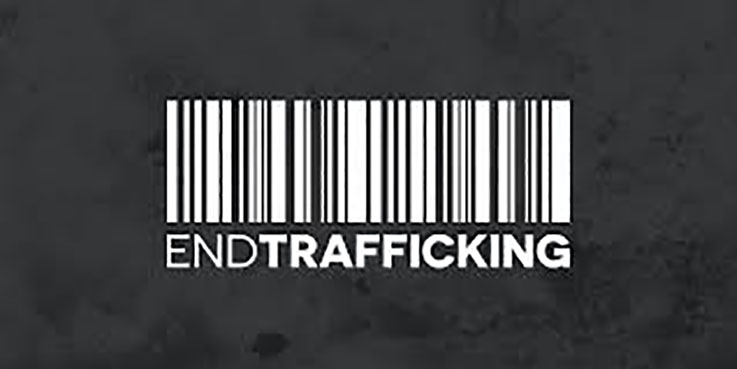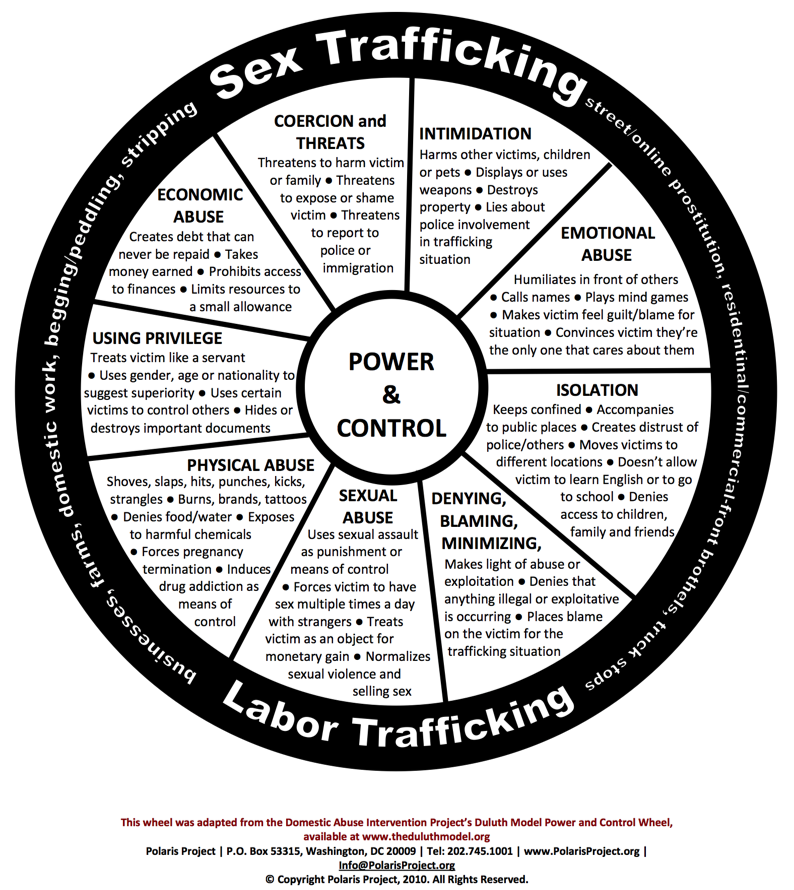 Human trafficking is modern day slavery that includes: force, fraud, and or coercion. It is used to obtain labor or a commercial sex act.
Human trafficking is modern day slavery that includes: force, fraud, and or coercion. It is used to obtain labor or a commercial sex act.
- Human trafficking generates $150 billion each year; McDonald's only makes $30 billion each year.
- It's present in every US state.
- Most victims are between 16-27 years old.
- Most people estimate there are between 30-40 million victims worldwide.
Types of Human Trafficking
Labor Trafficking
- Forced labor in:
- Food/produce/farming
- Construction
- Domestic work
- More common for imprisonment of men
- Labor trafficking is the most common form of human trafficking
Sex Trafficking
- Forced sex slaves or prostitution
- No consent or profit for individual
- Accounts for almost 25 percent of all human trafficking
- May also involve forced surrogacy or removal of the ovaries
- Many end up arrested and charged for prostitution
How Does This Happen?
The Circumstances
- Many are offered great job “opportunities” far from their homes with little information on who is offering the job.
- People already in sex work may be captured or threatened into sexual slavery.
- A family member/family friend or abusive partner may manipulate someone into sexual acts or labor for their profit.
How to Stay Safe
- Be aware of mysterious opportunities that involve unknown strangers.
- Don't meet people from the internet without information about their identity and history.
- Be aware of abusive tactics used by people close to you or dangerous favors they ask you to do.
Warning Signs of Human Trafficking
- They are not in possession of their passports, identification, or legal documents.
- They can be coerced into drug use by traffickers, or turn to substance abuse to help cope with their enslavement.
- They may have a cell phone despite a lack of other basic belongings.
- They may demonstrate affection towards their abuser. It is possible they have developed Stockholm Syndrome, where kidnapped victims, over time, become sympathetic to their captors.
- They feel that they are unable to leave their current situation.
- Victims are with a controlling person who speaks for them.
- They don't have their own vehicle.
- They live and work at the same place.
- Their pay is “withheld for safe keeping.” In many cases, the person is working to pay off a debt.
- They recently arrived in the country and do not speak the language, or they only know sex-related or labor-related words.
- They may be fearful, depressed, and overly submissive.
- They're scared to talk to authorities, since they're closely monitored.
- They may have signs of abuse, and may show signs of being denied food, water, sleep, and/or medical care.
Human Trafficking Power and Control Wheel
